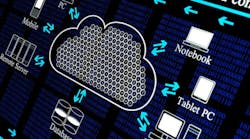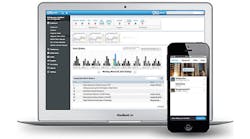Selecting the Right Program, and the Right Size, for Smaller Manufacturers
Operations leaders at small and mid-sized manufacturing companies have plenty of stress. In those types of organizations, widely called SMB, for small/medium-sized businesses, much of the burden of completing jobs on-time and on-budget falls on the operations leader, which explains their quest for visibility of — and close attention to — everything on the shop floor
Technology providers offer many solutions to remedy this stress —fixes to the things that give you headaches, slow your team down and endanger profitability. For example, many software platform can unify all your systems and eliminate processes that require double entry, which duplicates effort and increases the risk of manual entry error. A single system for the entire operation means someone on the floor can flag a job as complete, signal the next team member to action, and automatically document the process.
With everybody on the team seeing the same version of events, planning becomes more accurate as time and materials are recorded into the core system and production leaders are alerted as they approach budget and material thresholds. The result? Fewer rush jobs, fewer unplanned gaps in production and a more efficient operation overall – efficiency that is the key to profitability.
This is all good news for the operations chief. And many software solutions offer the end-to-end visibility and seamlessness that you need to contribute to efficiency and the bottom line. However, not all of them will get used as intended, even if their high-level functionality sounded like exactly what you needed.
But beware that ERP software programs for small and medium-sized manufacturers are almost always created with massive enterprises in mind. There are two dangers to this: One is that you’ll get a “feature overkill” system that is too hard to learn and is a pain to train your team on; the other is that even the functionality that is there assumes too much about the way your team members need to work, which straightjackets your process. In either case, it means under-adopted or underutilized software, which is a huge waste all its own.
“How can the system respond to the unique way my team works?” is one of the most important questions you can ask as you evaluate manufacturing software solutions. After all, if nobody uses it, you’ve wasted time and money. And if your team uses it, but can’t configure it to work the way you need them to, it’s the same scenario. One of the most important capabilities is configuration, which will allow even non-technical users to modify the application to mirror your workflow without the cost and complexity of writing and maintaining software code.
This seemingly simple, yet powerfully true requirement cannot be overstated — and it needs a bit more explanation.
Manufacturing ERP solutions typically come with the “standard” off-the-shelf capability that is required to cover about 70% of your business needs. While those features and functions will help you run your SMB manufacturing facility, they are missing the key to your competitive advantage.
The remaining 30% of your business needs covers the nonstandard processes, those that are specific to your company, and which you need to manage more effectively. This is where the difference between configuration and customization becomes apparent. Sure, adding a custom field or table is great, but what you really need in your software is to add a new process or to change the process flow. Only a configurable cloud-based manufacturing ERP solution will allow you to do this, without breaking the base functionality of your solution.
For operations leaders at SMB manufacturing companies, technology impacts how well they can deliver. One way to ensure you choose the right ERP is to look for a system that can work the way your team wants it to work — without burdening your company with unnecessary cost and complexity. As you seek ways to improve performance, it is important to determine if the solution you’re evaluating is configurable and if so, at what cost. If it’s not configurable, or if configuration can only be done by the vendor, that may be the wrong software for your SMB.
Lori Payne is the vice president, Manufacturing Development at KeyedIn Solutions, Inc., a developer and supplier of cloud-based business management systems for manufacturers and those who manage distributed enterprises. Contact her via LinkedIn.










